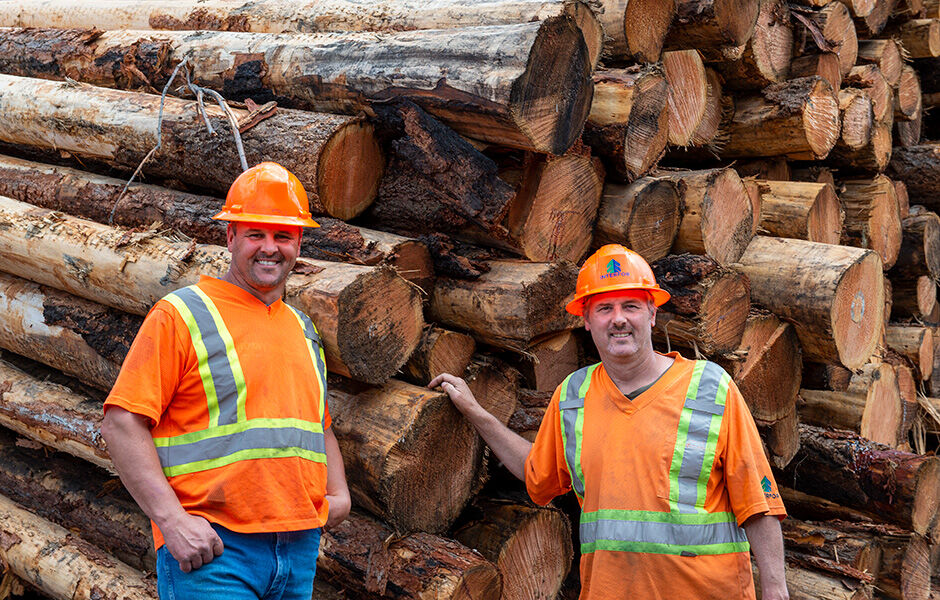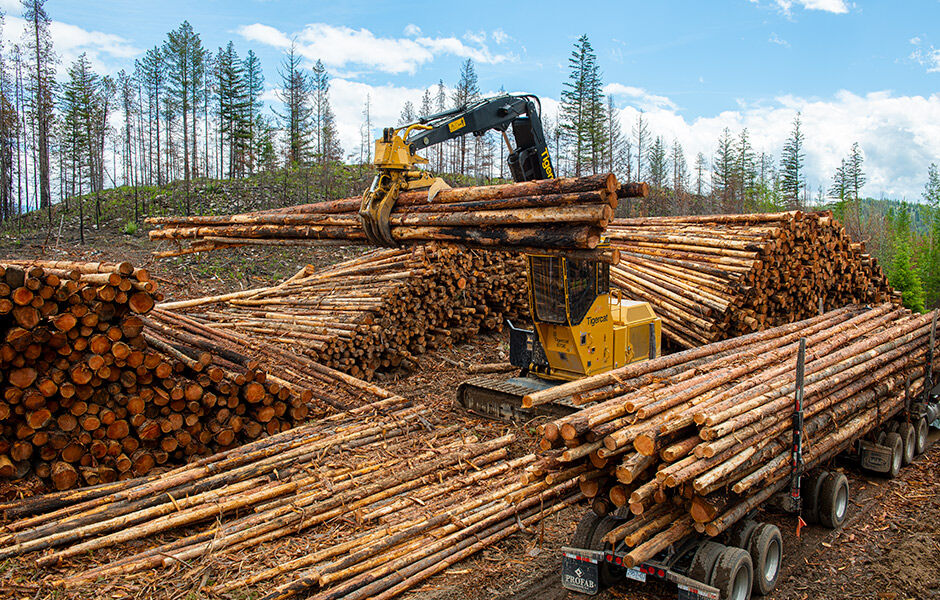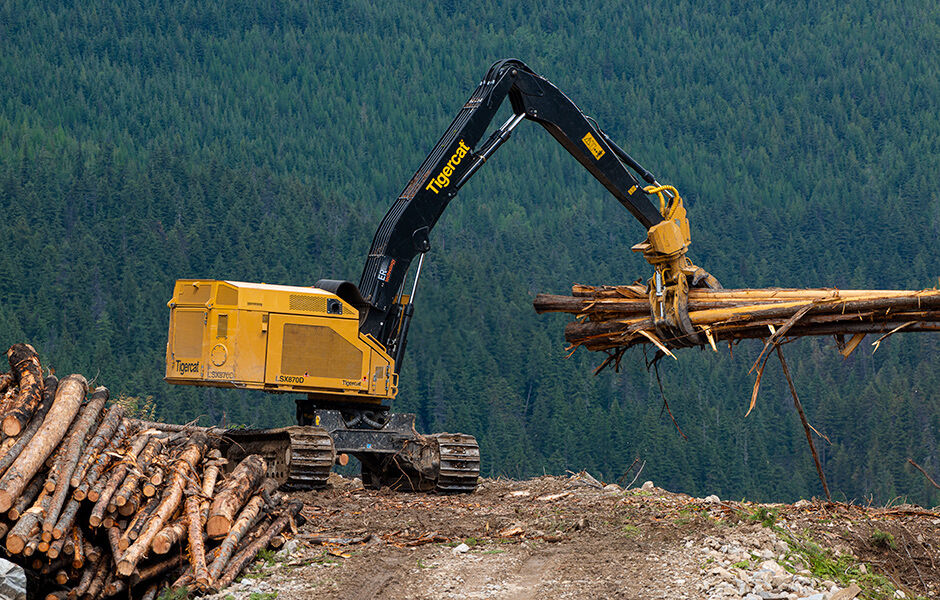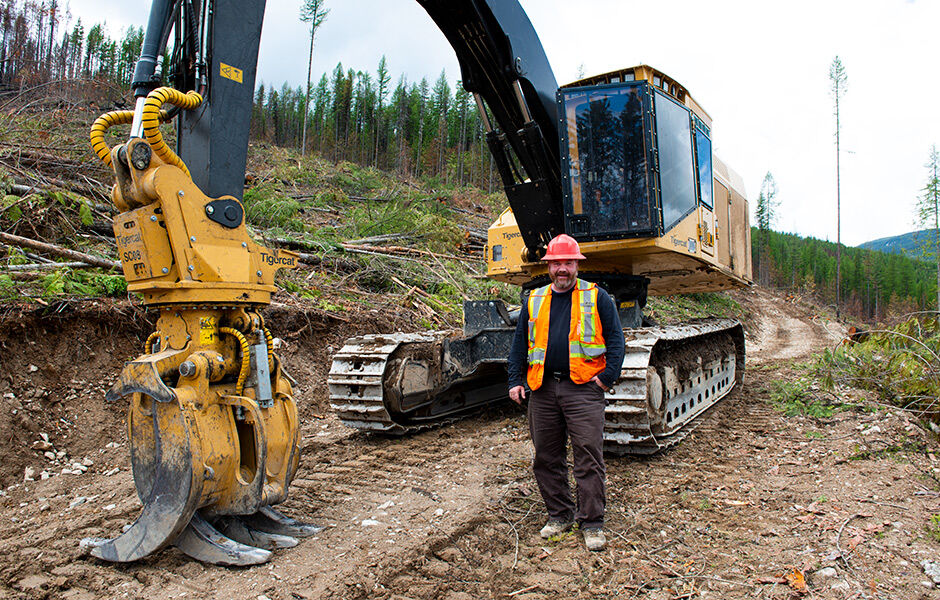Brothers Ron and Rodney Volansky own R & A Logging, operating in BC’s southern interior. Their dad, Ron Senior and his partner Al Olsen started the company in 1973, working in the bush for fifteen years before retiring in 1988.
In 1983, Brent and Blair, the eldest Volansky brothers, started Twin B Logging, which operated as a subcontractor for R & A.
“When Dad retired in 1988, Twin B assumed the workload,” explains Ron. Once he finished high school, Ron started working for Twin B Logging. His brother Rodney did carpentry for a couple of years before also committing to the family logging business.

In 1996, Ron and Rodney were approached by Pope & Talbot (which later became Interfor) about buying a tower yarder. That is when they decided to bring R & A Logging out of dormancy. The two brothers purchased the old equipment from their father and yarded until 2002, before switching to conventional ground-based logging.
“Back then, we were just one buncher, one skidder and one processor, and then we just kind of grew after that. Now we run two sides, a yarding side and a ground-based side,”
tells Ron.
In 2002, R & A purchased its first Tigercat, an L870 track feller buncher. It served as the primary production machine until 2017. “I want to say it had 30,000 plus hours on it,” says Ron. “It was an awesome machine. I bet we only lost twenty days. It never broke down,” adds Rodney.

The company is based out of a small logging community in the BC southern interior called Nakusp. The harvest area includes a mix of cedar, hemlock, fir and lodgepole pine. It is typical Kootenay second growth – around 45-50 cm (18-20 in) diameter and 30 m (100 ft) tall. R & A Logging handles all operational phases from road construction to log hauling.
The company has purchased twelve Tigercat machines over the years and currently operates L870C, LX870D and L855E feller bunchers, 630E and 632H skidders, LS855E and LSX870D shovel loggers, an 850 processor equipped with a 568 head, and an 875E logger. R & A purchases from heavy equipment sales specialist Tavis Mann, based out of Inland’s Vernon branch. “They are really good to work with,” says Ron. “Service sells.”

2021 fires
“We would typically start early and end early, ending the day around two o’clock. We parked the machines. We parked the 630E skidder in the middle of the block. The other skidder and the excavator were parked across from each other on a switchback, and the buncher was up the road about a half kilometre,”
“It probably burned two and a half mountain ranges in two hours. This fire and the one across the lake happened at exactly the same time. I watched the one across the lake really start to burn. You could just tell by the black smoke,”


“We need to educate younger generations on the forest industry in Canada. It is a sustainable industry. Mother nature just burned down these two valleys. Now we are coming to salvage the burned wood. Then we are going to go back and plant new trees.”
“There were very few elk here in the eighties, now we have herds of them. That isn’t from deforestation. That is because we have created a good habitat for them. I want to see that message passed along. I want the people in Vancouver, Calgary, Toronto, Montreal, and Halifax, to know that we manage the forests sustainably,”

 Copyright 2020 All rights reserved.
Copyright 2020 All rights reserved.